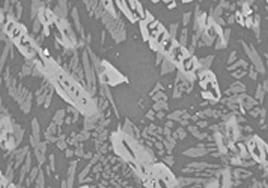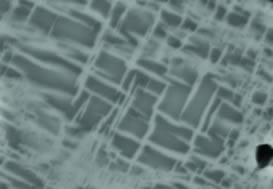We use paleomagnetic data to provide constraints on tectonic reconstructions, geodynamo formation and behavior, planetary evolution, magmatic flow, and sub-solidus deformation. To reliably draw these kinds of conclusions, it is necessary to fully understand the mechanisms by which magnetic minerals form and acquire magnetization and the temperature at which this happens. How reliable are our paleomagnetic recorders?
Any given magnetic mineral assemblage results from complicated interactions of many different factors, including bulk rock composition, oxidation state, pressure, thermal history, and the presence or absence of water. We can learn a lot by studying natural samples, but it may be impossible to disentangle all these variables to understand the role that each one plays. By working with synthetic rocks and minerals, we can isolate each of these variables to try to understand what role it plays in magnetic mineralogy and magnetization.
Relevant Publications
Bowles, J.A., A. Morris, M.A. Tivey, and I. Lascu (2020), Magnetic mineral populations in lower oceanic crustal gabbros (Atlantis Bank, SW Indian Ridge): Implications for marine magnetic anomalies, Geochem. Geophys. Geosys., 21, doi: 10.1029/2019GC008847. Link to pdf.
Bowles, J.A., S.-C. Lappe, M.J. Jackson, E. Arenholz, and G. van der Laan (2019), Curie temperature enhancement and cation ordering in titanomagnetites: Evidence from magnetic properties, XMCD, and Mössbauer spectroscopy variations in titanomagnetite: evidence from XMCD and Mössbauer, Geochem. Geophys. Geosys., 20, 2272–2289, doi: 10.1029/2019GC008217. Link to pdf.
Jackson, M.J., and J.A. Bowles (2018), Malleable Curie temperatures of natural titanomagnetites: Occurrences, modes and mechanisms Journal of Geophysical Research – Solid Earth, 123, doi: 10.1002/2017JB015193. Link to pdf.
Bowles, J. A., and M. J. Jackson (2016), Effects of titanomagnetite reordering processes on thermal demagnetization and paleointensity experiments, Geochemistry, Geophysics, Geosystems, 17, 4848– 4858, doi:10.1002/2016GC006607. Link to pdf.
Brachfeld, S., D. Shah, E. First, J. Hammer, and J.A. Bowles (2015), Influence of redox conditions on the intensity of Mars crustal magnetic anomalies, Meteroritics & Planetary Science, 50, 1703-1717. Link to pdf.
Bowles, J.A., M.J. Jackson, T.S. Berquó, P.A. Solheid, and J.S. Gee, Inferred time- and temperature-dependent cation ordering in natural titanomagnetites, Nature Commun., 4, DOI: 10.1038/ncomms2938, 2013. Link to pdf.
Bowles, J.A., L. Tatsumi-Petrochilos, J.E. Hammer, S.A. Brachfeld, Multi-component cubic oxide exsolution in synthetic basalts: temperature dependence and implications for magnetic properties, J. Geophys. Res., 117, B03202, doi:10.1029/2011JB008867, 2012. Link to pdf.
Bowles, J.A., J.S. Gee, K. Burgess, and R.F. Cooper, Timing of magnetite formation in submarine basaltic glass: a comparison of natural and synthetic samples with implications for geomagnetic paleointensity studies, Geochem. Geophys. Geosys, doi:10.1029/2010GC003404,2011. Link to pdf.
Burgess, K., R.F. Cooper, J.A. Bowles, J.S. Gee, and D.J. Cherniak, Effects of open- and closed-system oxidation on texture and magnetic response of remelted basaltic glass, Geochem. Geophys. Geosys., 11, Q10007, doi:10.1029/2010GC003248, 2010. Link to pdf.
Bowles, J.A., J.E. Hammer, and S.A. Brachfeld, Magnetic and petrologic characterization of synthetic Martian basalts and implications for the surface magnetization of Mars, J. Geophys. Res. – Planets, 114, E10003, doi:10.1029/2009JE003378, 2009. Link to pdf.


